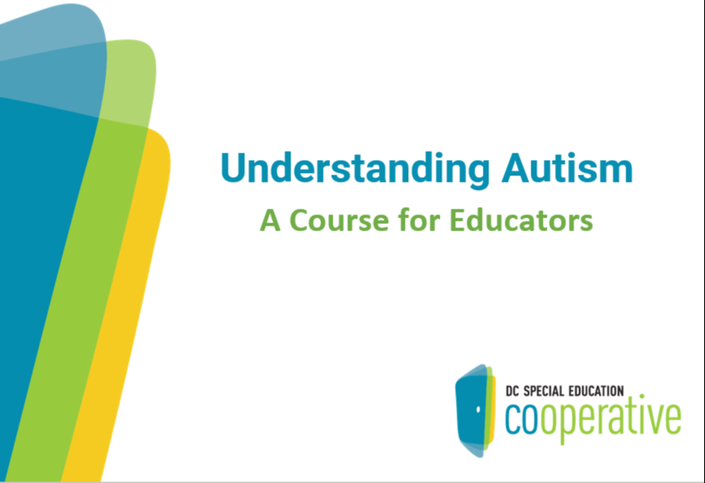
Understanding Autism
This course is available free to Co-op members.
Contact your school's special education director for a code to access the course free of charge.
Throughout this series, the voices of autistic individuals as well as the latest research on autism are highlighted, to shed new light and challenge what had been commonly held beliefs and practices regarding autistic students. We hope this series will provide you with a greater understanding of autism, as well as multiple tools with which to provide high quality support to meet the needs and improve the school experience of your autistic students.
This course is organized around 6 different modules, each highlighting a key feature of autism and the impact on autistic students.
Module 1: Introduction to Autism
In this introductory session, we provide an overview of autism, particularly the characteristics that lead to a diagnosis of autism, and introduce the concept of a strengths-based approach to autism that will underpin the remainder of this course.
Module 2: Language
This module focuses on the topic of language, specifically verbal communication or spoken language. You’ll learn why spoken language can be so difficult for many autistic people, and specific ways to provide multiple avenues of communication for autistic students.
Module 3: Social Interactions
This module explores the topic of social interactions, including differences in non-verbal communication and in ways of playing and sharing interests. You’ll learn how to facilitate positive peer interactions among autistic students of all ages, as well as specific strategies for teaching younger students to share and take turns.
Module 4 : Sensory Differences
This module will help you understand how sensory differences may manifest, the impact that they can have on autistic students, and strategies to support sensory differences
Module 5: Executive Functioning and the Learning Environment
In this module, you’ll learn about why visual supports are critical for autistic students, as well as how to create effective visuals for transitions and task completion. You’ll also learn how to use prompt hierarchies to teach and to fade, so that students do not become prompt dependent.
Module 6: Behavior
In this final module, we’ll help you understand behavior challenges, and introduce a protocol and tools for developing effective behavior plans for autistic students.
This course is self-paced and takes approximately 5-6 hours to complete.
Your Instructor

Laura Lorenzen is a proven special education leader in Washington, DC who, as the parent of a child with special needs, is passionate about ensuring the success of every child.
Laura has spent nearly two decades leading innovative and quality programming for students with disabilities, from early childhood through high school. She began her career at a non-public school for students with language-based learning disabilities, ADHD, and autism, before taking the helm as Director of Student Support at a DC Public Charter School, building its reputation as a local and national leader in quality inclusive special education services. Under her leadership, the school was recognized in 2018 as one of only four nationwide “Centers of Excellence” by the National Center for Special Education in Charter Schools.
Laura has been actively involved in the Special Education Co-op for many years, having served for 2 years as member of its Advisory Board and as a consultant, providing professional development and coaching around Response to Intervention (RtI) practices. Laura joined the Co-op staff as a Program Quality Specialist in 2021.
